In the matchup of Threadripper vs TR Pro vs EPYC, which series of CPU serves its purposes or your purposes best? How are we going to be determining that?
For the answers to these questions and more, just jump around with the table of contents below or start reading while I introduce the three CPU series and break down their differences.
TABLE OF CONTENTS
Threadripper vs TR Pro vs EPYC: Introducing The Competitors
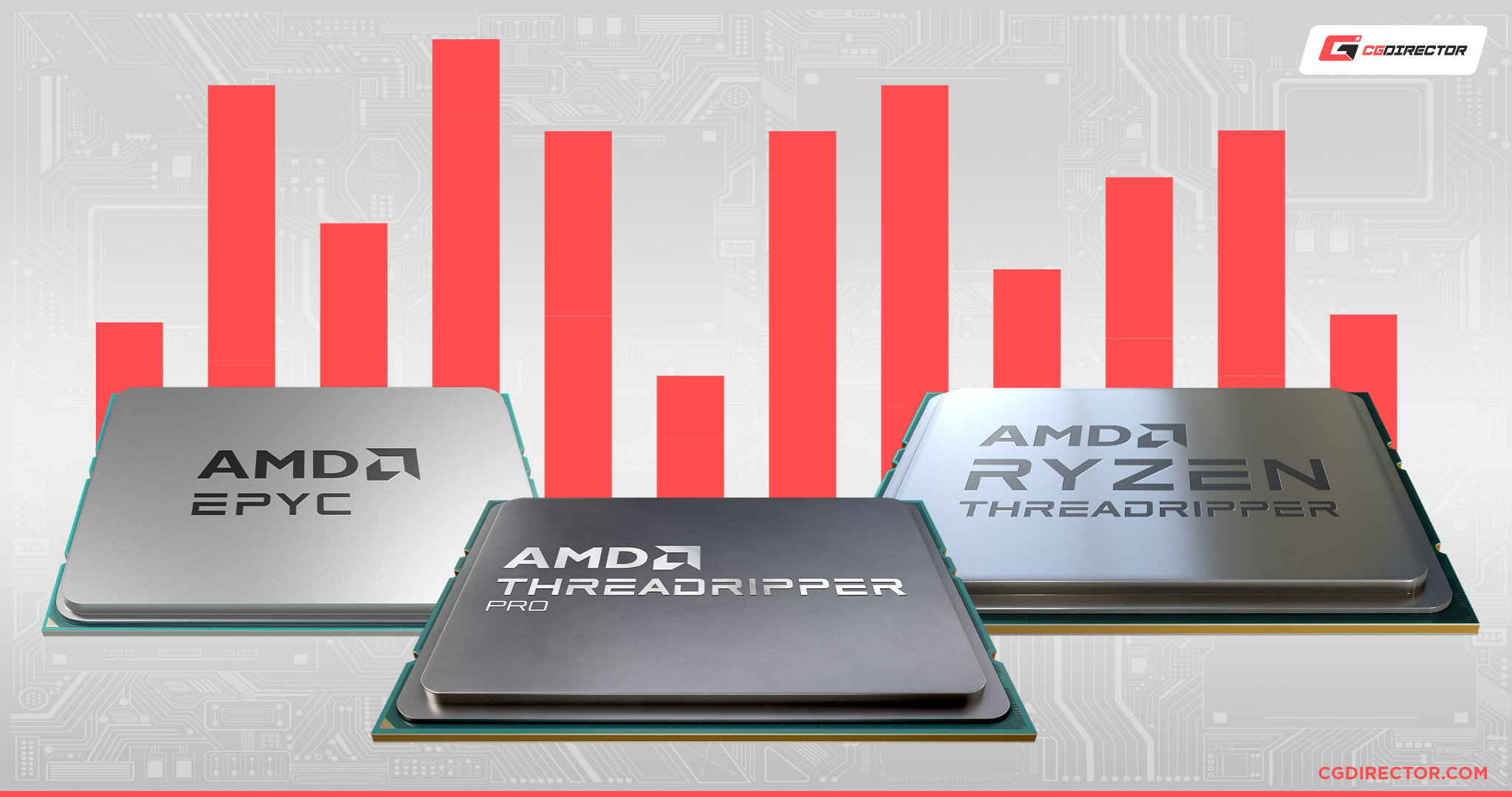
AMD Ryzen Threadripper Series
The Ryzen Threadripper series was introduced shortly after Ryzen’s debut.
Ryzen itself was already considered something of a “thread-ripper” on its debut due to having such a great cost-per-core while boosting single-core performance to be on par with Intel for the first time in nearly a decade.
The official “Threadripper” series elevates this goal to a ridiculous degree, bringing record-breaking feats like 64-core CPUs to HEDT (High-End Desktop) platforms for the first time.
AMD Ryzen Threadripper Pro Series
The Ryzen Threadripper Pro series was introduced with the Zen 2-based Threadripper 3900-Series in 2020, and boast further increases in core count and thread count compared to Threadripper and Ryzen 9.
AMD EPYC Series
AMD’s EPYC Series of CPUs are CPUs made explicitly for server platforms, and…yeah, even higher core counts…ever seen a 96-core CPU?
Well, if you’re in the market and pricing bracket for an AMD EPYC chip, you just might!
But now, we’re basically just slapping the concept of “more cores” over and over until it reaches a point of absurdity. Kind of like AMD!
Let’s start talking in more detail about what really makes these core counts meaningful when comparing these CPU Series below.
Threadripper vs TR Pro vs EPYC: Core and Thread Count
So, per-generation, Threadripper, TR Pro, and EPYC will be using the same architecture from AMD.
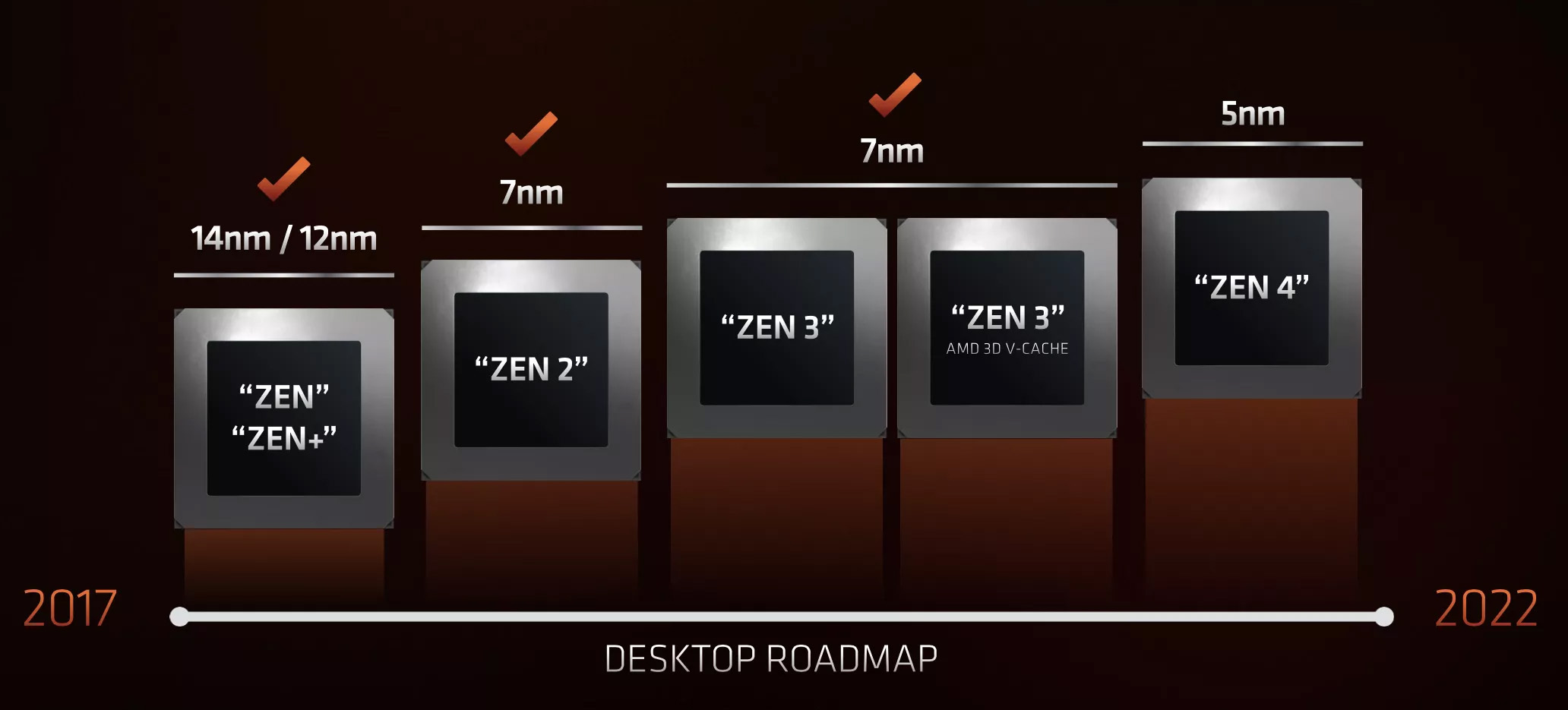
Image Credit: Techspot
EPYC especially, since it’s AMD’s server platform, and server platforms are where CPU manufacturers are making back most of their money. But HEDT and consumer platforms are important too, and HEDT is a very interesting market space “between” server and consumer platforms.
To simplify things, I’m gonna break things down in Zen core generation and give the highest core count for each of these CPU series to give you an idea of what market they’re aiming at.
The lowest core/thread count will usually be like, half to a quarter of that.
Zen 1 Breakdown
- Threadripper: Peaks at 16 cores, 32 threads in 2017.
- EPYC: Peaks at 32 cores, 64 threads in 2017.
Zen Plus Breakdown
- Threadripper: Peaks at 32 cores, 64 threads in 2018. Architectural improvements over Zen 1 make it faster than previous-gen EPYC! Which I take to mean AMD didn’t feel like releasing an EPYC CPU in 2018.
Zen 2 Breakdown
- Threadripper: Peaks at 32 cores at 2019 Launch; Peaks again at 64 cores in 2020.
- Threadripper Pro: Starts at 12 cores, but peaks at 64 cores and 128 threads in 2020.
- EPYC: Peaks at 64 cores and 128 threads in 2020.
Zen 3 Breakdown
- Threadripper: Peaks at 32 cores, 64 threads in 2022.
- Threadripper Pro: Starts at 12 cores, but peaks at 64 cores and 128 threads in 2022.
- EPYC: Also peaks at 32 cores, 64 threads in 2022. EPYC in general is served in more package variations than either of the Threadripper series, though.
Zen 4 Breakdown
- EPYC: To close out 2022, the “true” Thread-ripper revealed itself in the form of the AMD EPYC 9654. This behemoth 96-core, 192-thread CPU launched in November 2022, and at the time of writing, has yet to be accompanied by either a CPU with more cores or fellow Zen 4 chips.
There’s a trend that becomes visible over time with the Threadripper and EPYC releases alike where AMD simply stacks on more cores every generation.
Threadripper Pro actually defies that by lowering the barrier of entry for core count into the HEDT space, which could prove interesting for workloads more dependent on single-core performance if that lower core count can be properly utilized.
Threadripper vs TR Pro vs EPYC: Pricing for Performance
Finally, let’s start talking about pricing for performance without crying and laughing maniacally.
With core counts scaling this high, it’s best I just start dropping the price ranges you can expect for this current generation, and the corresponding core counts you can expect in turn.
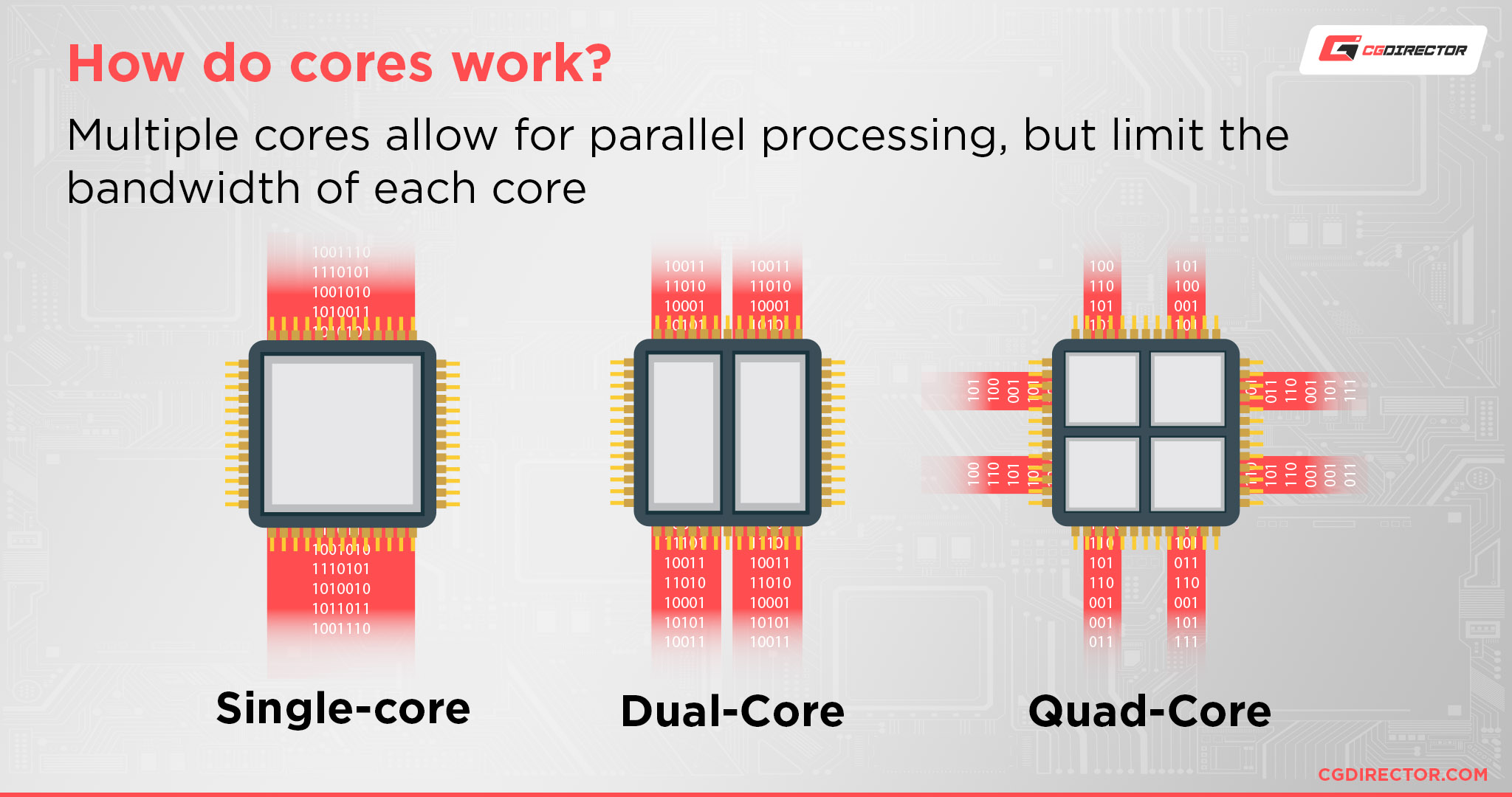
I’ll also save talk of the benefits of the Pro series’ lower core threshold in the “feature set” section next up.
Current Gen Breakdown (All Price Ranges Estimated)
Threadripper (Zen 2) Price Ranges
- Entry: Gen 3, Zen 2 Threadripper starts at $1399 for 24 cores and 48 threads
- Mid-Range: Gen 3, Zen 2 Threadripper breaches $1999 for 32 cores. Zen 2 Threadripper Pro starts at 12 cores and ~$1129 on Amazon at the time of writing- I’d recommend bumping up to at least a Zen 3 5955WX instead.
- High-End:
Threadripper Pro (Zen 3) Price Ranges
- Entry: At the time of writing, the cheapest available TR Pro CPU is the 5955WX for ~$1299, which boasts 16 cores.
- Mid-Range: Currently, the Zen 3 TR Pro 5965WX is a 24-core chip available starting around ~$2199 and a bump up to 32 cores with the 5975WX is also feasible for around ~$3199.
- High-End: In April 2023, the Zen 3 TR Pro 5995WX is the 64-core ~$6499 chip at the top of the market stack.
EPYC (Zen 4) Price Ranges
- Entry: Starts at $2730 and 32 cores for Zen 4; $913 and 16 cores for Zen 3.
- Mid-Range: Starts at $4598 and 48 cores for Zen 4; $2730 and 32 cores for Zen 3. EPYC-F “Frequency-Optimized” CPUs start at $2468 for Zen 3 and $3850 for Zen 4.
- High-End: Starts at $2730 and 32 cores for Zen 4; $913 and 16 cores for Zen 3.
Threadripper vs TR Pro vs EPYC: Feature Set
So, the key weakness of all of these CPU series and the nature of stacking CPU cores indefinitely, in general, is revealed by the existence of the Theadripper Pro series, and to a lesser extent the EPYC-F Frequency-Optimized series.
That is, stacking all these cores will inevitably tank your performance in applications reliant on strong single-core performance, like…gaming, for example.
Besides that, in terms of feature set, the whole point of HEDT is to be a stone’s toss away from using server CPUs and server boards.
So practically speaking, if you aren’t already in the market for a server, the other feature differences between EPYC and Threadripper most likely aren’t relevant to you.
One fairly unique benefit of EPYC compared to Threadripper is future scalability through Dual CPU boards, though.
Threadripper vs TR Pro vs EPYC: Who Wins For You?
Alright! Enough establishing the fighters. Let’s push you toward the right one for you of your three main choices.
Threadripper Is Recommended For…
- Those who want a workstation CPU built solely for “ripping” through threaded applications like long 3D renders, batch processes, etc.
- Those who aren’t gaming or able to actually use all the raw CPU throughput made available through Threadripper.
Threadripper Pro Is Recommended For…
- Those who want a powerful workstation CPU on an HEDT…but still want gaming and other applications not well-optimized for multiple cores to run well.
- Those who want to get into an HEDT platform at a lower price than Threadripper…at least on the lower end of TR Pro.
EPYC Is Recommended For…
- Those who are building a server.
- Really, that’s about it. Unless you start getting really tricky with used EPYC-F CPUs in the secondhand market, the name of EPYC is firmly locked behind “Server CPU” for a reason.
FAQ
Do Threadripper and EPYC CPUs Work For Gaming?
Not really, no.
For content creation, high-core-density CPUs are a godsend, but for gaming and other workloads that need high-core speeds, Threadripper and Server CPUs like it are a fundamental compromise.
Is AMD EPYC Better Than Intel Xeon?
Depends on your workload, since Intel Xeon can be fairly compelling in its own right. However, if the pricing is right…I’d pretty much always go with an AMD CPU if I were buying a server, just due to the sheer value in cores-per-dollar.
That’s just my opinion, though, I don’t wanna summon the Intel server builders into my comments section for speaking out of line.
Over to You
And that’s all, for now!
I hope you all enjoyed this article and this breakdown of the three different ways AMD managed to find and repackage the idea of “as many CPU cores as we can stuff on the die”.
I find it pretty admirable that AMD managed to do that, and that I actually came out of the other end of it enlightened about why exactly we needed a Threadripper “Pro” Series. I still think the Pro series is best at its entry-level, too…weird…
Enough rambling for now. If you have any questions or concerns, please leave them in the comments below! Me or another CGDirector Team member will be happy to help.
Besides that, there’s also our Community Forums, where you can further discuss your ideal CPU choices with our community of fellow enthusiasts and experts.
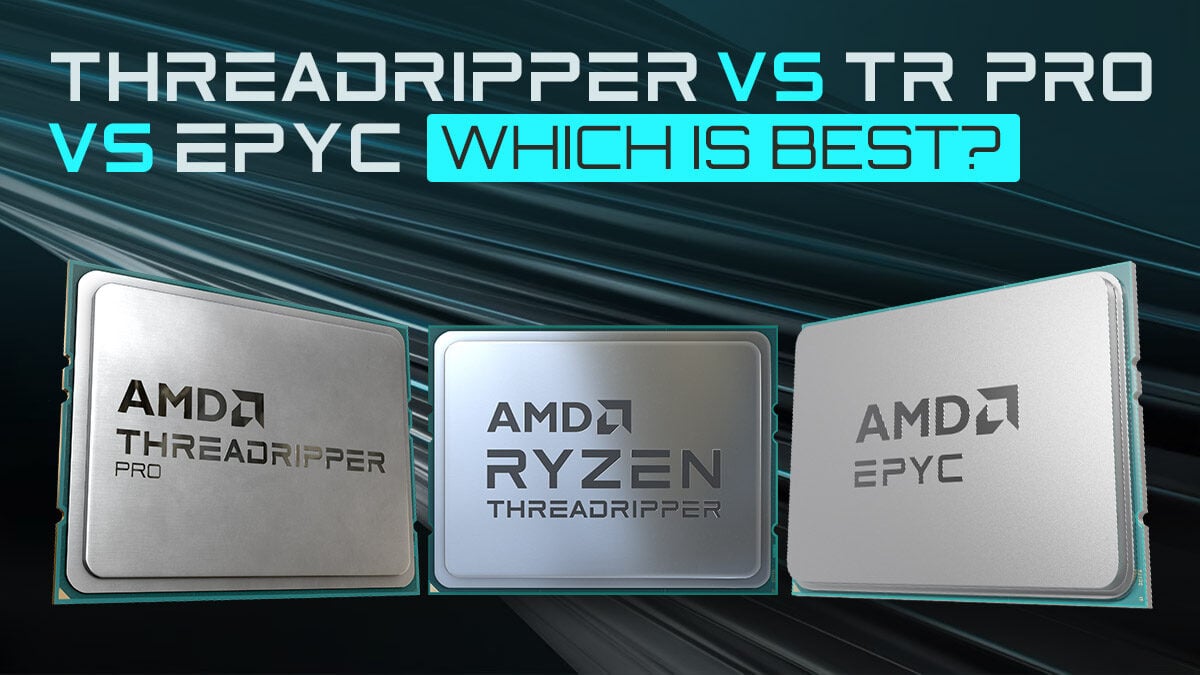
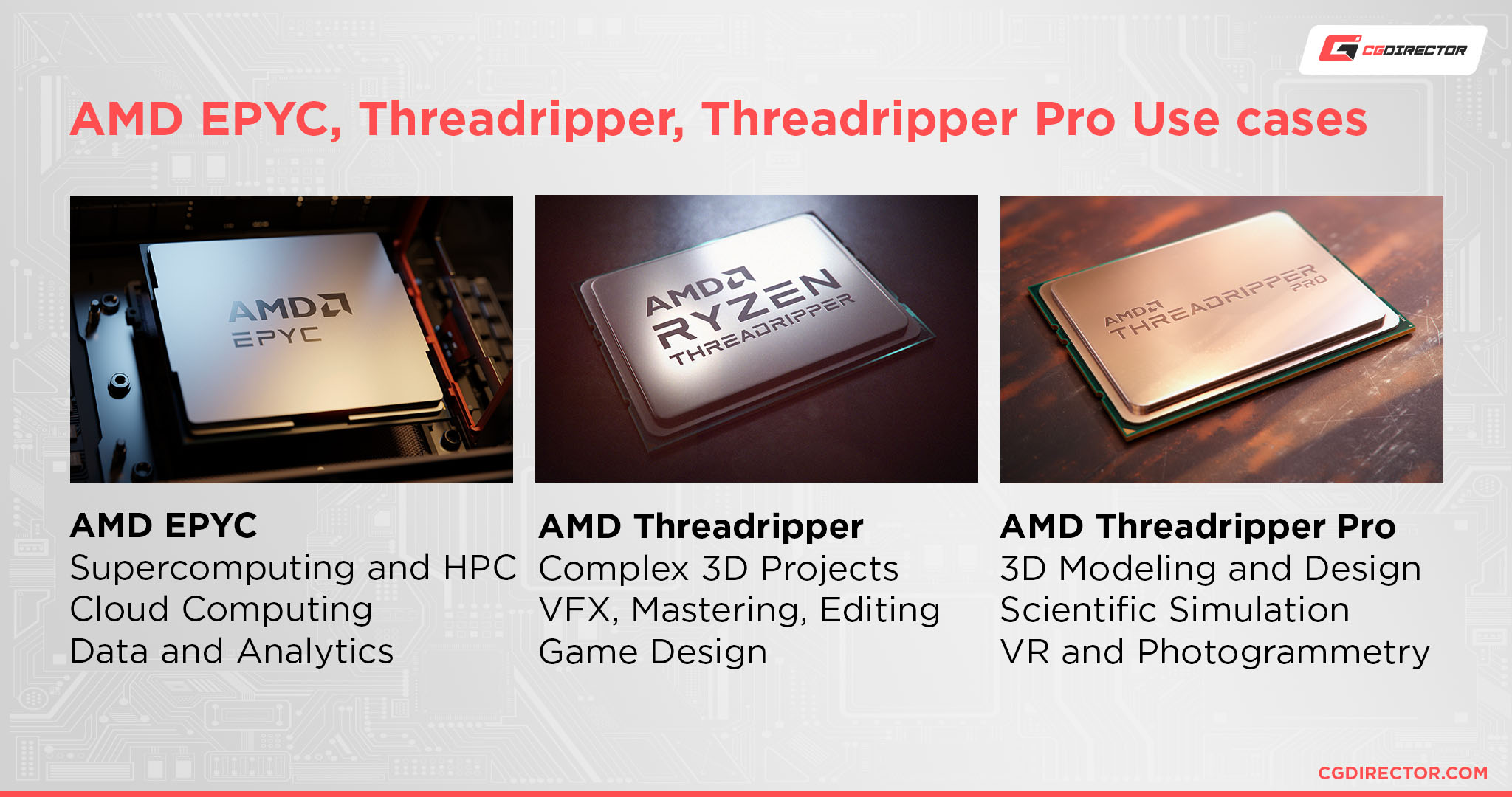
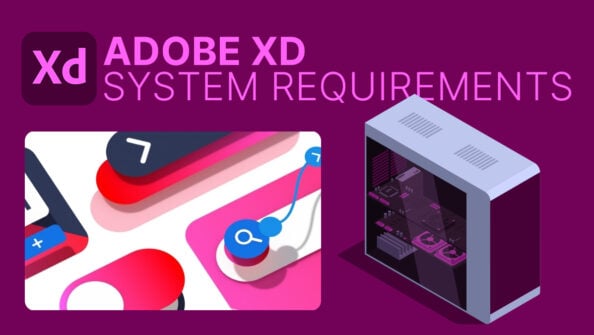
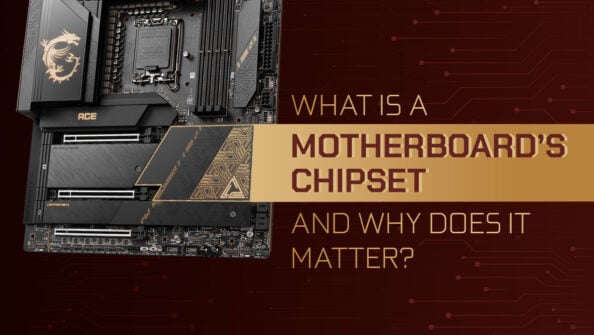
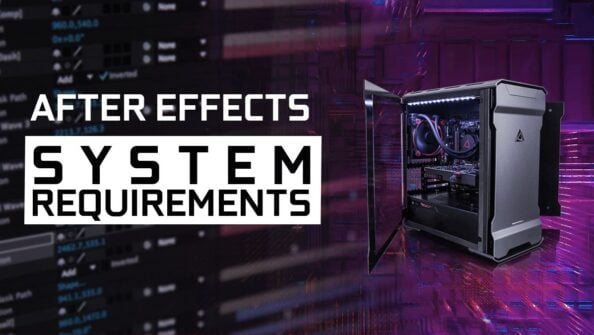
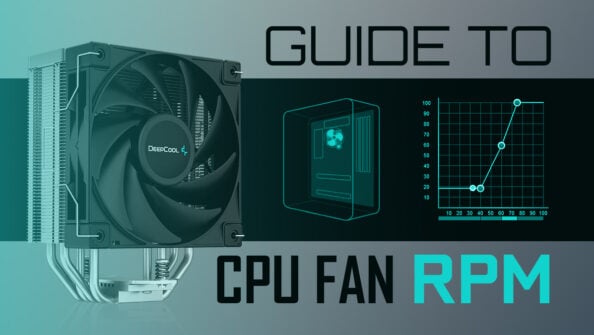
0 Comments